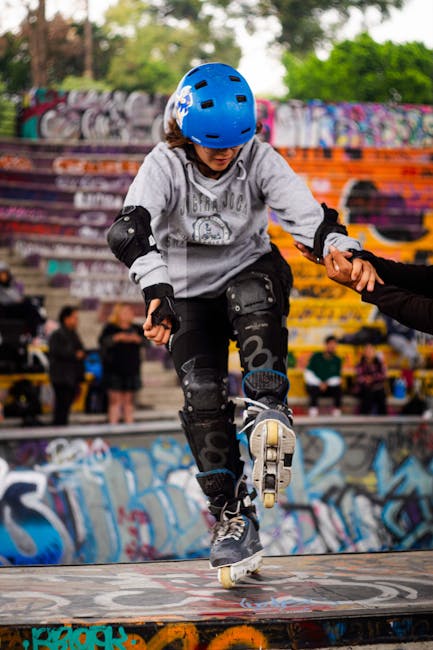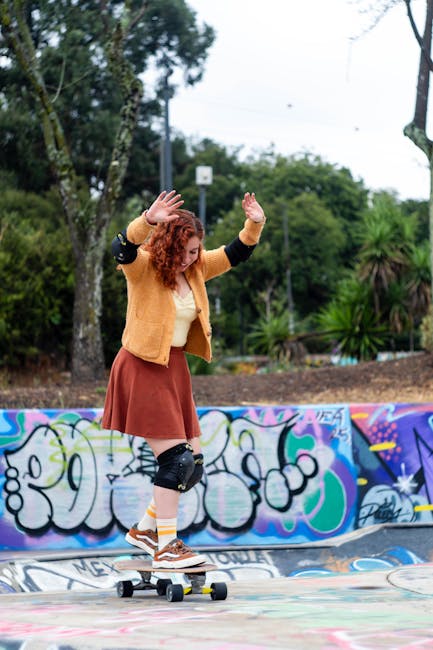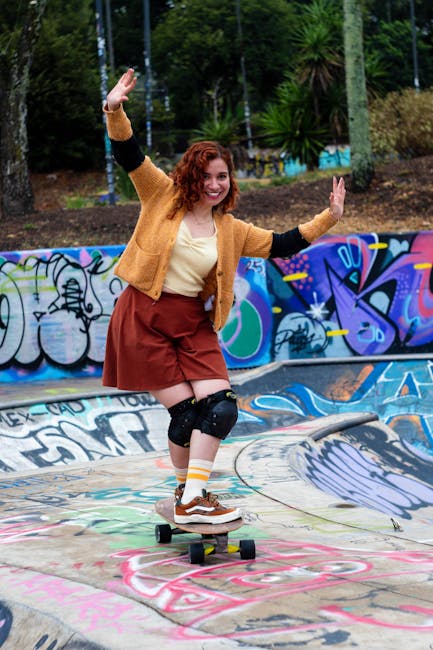Mastering the Art of Skateboarding Tricks: A Comprehensive Guide for Beginners and Beyond
Skateboarding, a thrilling blend of skill, balance, and creativity, offers an endless array of tricks to master. From the foundational ollie to the mind-bending heelflip, the journey of learning skateboarding tricks is a rewarding and challenging one. This comprehensive guide will break down various tricks, providing step-by-step instructions, helpful tips, and safety precautions to ensure a smooth and safe progression for skaters of all levels.
Getting Started: The Fundamentals
Before attempting more advanced tricks, mastering the basics is crucial. This includes achieving a comfortable stance, practicing balance, and developing essential skills like pushing, turning, and stopping. Getting comfortable on your board is the key to unlocking more complex maneuvers. Spend ample time practicing these fundamentals until you feel confident and in control of your board.
1. Stance and Balance:
Choosing the right stance (regular or goofy) is paramount. Regular stance means your left foot is forward, while goofy stance means your right foot is forward. Experiment to find the most natural and comfortable position. Once you have your stance, focus on maintaining balance while moving at different speeds. This will build the foundation for every trick.
2. Pushing and Turning:
Efficient pushing is critical for maintaining momentum. Practice pushing with your dominant foot while keeping your other foot on the board. Turning involves shifting your weight and using your feet to guide the board. Smooth, controlled turns are vital for maneuvering around obstacles and setting up for tricks.
3. Stopping:
Safe stopping techniques are crucial to prevent accidents. The most common method is foot braking, using your back foot to drag against the ground. Practice this until you can stop smoothly and confidently. As you progress, you may learn other techniques such as using a heel or toe to control speed and direction.
Essential Tricks: Building Your Foundation
Once you’ve mastered the basics, you can start learning fundamental tricks that form the building blocks for more advanced maneuvers.
1. The Ollie: The King of Tricks
The ollie is the cornerstone of skateboarding. It involves popping the board into the air while simultaneously jumping, maintaining your balance, and landing smoothly. This trick requires practice and coordination. Numerous online tutorials demonstrate the proper technique, focusing on the foot placement, popping motion, and landing.
2. The Pop Shove-it: Rotating the Board
The pop shove-it involves rotating the board 180 degrees under your feet. This trick builds on the ollie, requiring a similar pop but focusing on flicking the tail to initiate the rotation. Mastering the ollie is highly recommended before attempting this trick.
3. The Manual: Balancing on the Back Wheels
The manual involves balancing on the back wheels, maintaining your balance and gradually increasing the distance you can travel. This trick develops crucial balance and control, which is essential for various other tricks. Start with short manuals and slowly progress to longer ones.
Intermediate and Advanced Tricks: Taking Your Skills Further
After mastering the foundational tricks, you can explore a wide range of intermediate and advanced moves. These often combine elements of basic tricks and require significant practice and dedication.

1. The Heelflip: Flipping the Board
The heelflip is a stylish trick involving flipping the board 360 degrees using your heel. It’s a challenging trick that requires precise timing and coordination. It’s built upon the ollie and requires a distinct flick of the heel to initiate the rotation.
2. The Kickflip: Flipping the Board with the Toe
Similar to the heelflip, the kickflip involves a 360-degree flip, but this time using your toes. This requires a slightly different flick and is a highly sought-after trick in skateboarding culture.
3. The Nollie: Ollie from the Nose
The nollie is an ollie performed with the nose of the board instead of the tail. It requires a slightly different approach and emphasizes balance and control, particularly landing smoothly. It is considered a more difficult variation of the ollie.

4. Grinds: Sliding on Obstacles
Grinds involve sliding the truck(s) of your skateboard along an obstacle. This requires balance, precision, and practice. Different grinds exist (like 50-50 grinds, boardslides, etc.), each requiring slightly different techniques.

Safety First: Protecting Yourself
Skateboarding inherently carries risks. Always prioritize safety. Essential safety gear includes a helmet, knee pads, and elbow pads. Start practicing in a safe environment, such as a smooth, flat surface, away from obstacles and traffic. Gradually progress to more challenging environments as your skills improve. Listen to your body and take breaks when needed to avoid injury.
Practice Makes Perfect: Consistent Effort
Learning skateboarding tricks requires consistent practice and dedication. Don’t get discouraged by initial setbacks. Focus on mastering each trick individually, practicing the elements until they become second nature. Watching tutorials, seeking guidance from experienced skaters, and maintaining a positive attitude will significantly improve your learning process. Enjoy the journey, embrace the challenges, and celebrate every small victory along the way.

